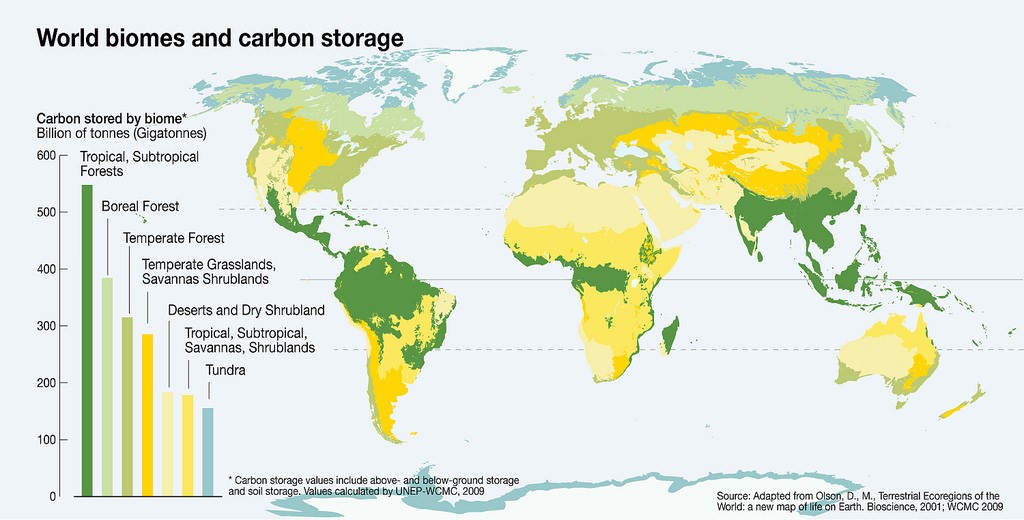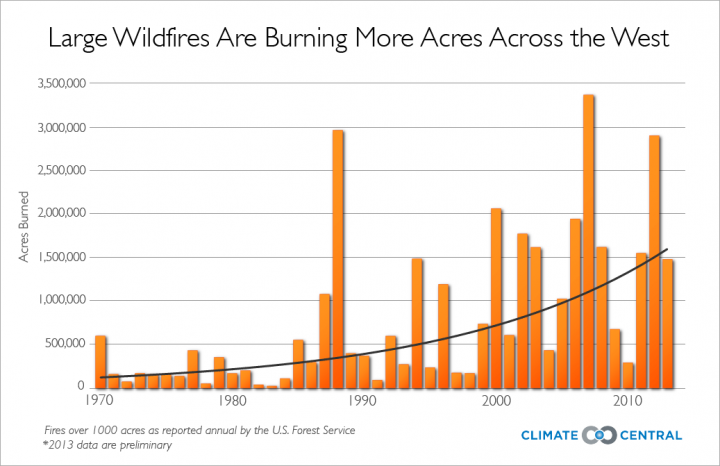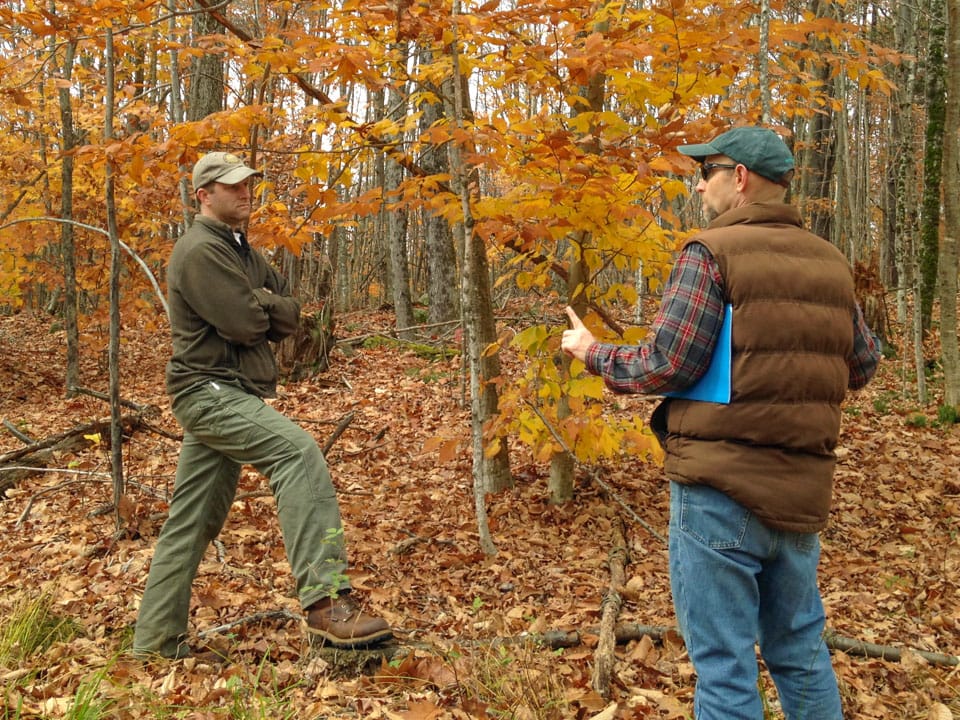Wildfires in the western U.S. are once again top of mind. We have seen harrowing images of the scale and severity of the recent fires, the efforts to contain them, and the destruction they leave in their wake. The immediate impacts on communities and surrounding forests are the most obvious and often gut wrenching—from the loss of life and destruction of family homes and property to acres of charred trees. The massive smoke plumes generated by these fires are even affecting people hundreds of miles away from the flames, with severe impacts on visibility and air quality. In fact, images of the smoke captured from space perhaps do the best job of conveying the scale of these late-summer fires in the U.S. and Canada.
But there is an important impact that will ultimately be felt by all of us, regardless of where we live. As the fires turn these forests from carbon sinks to carbon sources, there will be significant quantities of additional carbon released into the atmosphere. As they grow, our forests naturally draw carbon dioxide out of the atmosphere and store it in their roots, trunks, and branches. Globally, forests absorb about 1/3 of annual carbon emissions and they constitute most of the carbon sink on land.[i] So it is critical that forests continue to act as a stable and persistent carbon sink if we want to avoid exacerbating the warming effects of rising CO2. That makes these large fires a real concern to all of us from a carbon perspective.

One study found that California lost 69 million metric tons of carbon from areas burned by wildfire between 2001 and 2010. That is more than the annual emissions of the entire state of Massachusetts.[i] Carbon losses from wildfire have continued in the eight years since 2010, with many notable megafires, including the Mendocino Complex Fire that recently became the largest in the state’s history. This is part of an ongoing trend toward larger fires that has been observed in recent decades (see figure) and is in line with what we expect in the future as the climate continues to warm.

To combat this trend, one strategy is to take steps to make forests more resilient to the stresses that predispose them to these kinds of large fires, including drought stress and insect-related mortality. With Manomet’s help, members of the Climate Smart Land Network (CSLN) are staying apprised of these trends and the latest recommended management strategies. At the CSLN Member Gathering in May, an entire afternoon session was dedicated to the topic of increasing drought, including its implications for forest management, forest health, and increasing fire risk.
The fire trends in the western U.S. highlight the interplay between forest health and climate change, and the importance of including climate concerns in forest planning and management. Through the CSLN we are combining the assets, skills and knowledge of the nonprofit and for-profit sectors to address one of the major issues of our time.
[i] Pan, Yude, Richard A. Birdsey, Jingyun Fang, Richard Houghton, Pekka E. Kauppi, Werner A. Kurz, Oliver L. Phillips, et al. 2011. “A Large and Persistent Carbon Sink in the World’s Forests.” Science. 333(6045):988–93. doi:10.1126/science.1201609.
[i] Wikipedia. “List of U.S. states by carbon dioxide emissions.” Based on data from US Environmental Protection Agency and US Energy Information Administration. Available online at https://en.wikipedia.org/wiki/List_of_U.S._states_by_carbon_dioxide_emissions; last accessed 24 Aug. 2018.





 Back to all
Back to all

